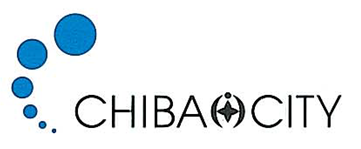Call for Papers
Download the Call for Papers / Call for Designs in PDF format (253KB).
Call for Papers ASP-DAC 2015
Aims of the Conference:
ASP-DAC 2015 is the 20th annual international conference on VLSI design automation in Asia and South Pacific regions, one of the most active regions of design and fabrication of silicon chips in the world. The conference aims at providing the Asian and South Pacific CAD/DA and Design community with opportunities of presenting recent advances and with forums for future directions in technologies related to Electronic Design Automation (EDA). The format of the meeting intends to cultivate and promote an instructive and productive interchange of ideas among EDA researchers/developers and system/circuit/device designers. All scientists, engineers, and students who are interested in theoretical and practical aspects of VLSI design and design automation are welcomed to ASP-DAC.
Areas of Interest:
Original papers in, but not limited to, the following areas are invited.
1. System-Level Modeling and Design Methodologies:
1.1. HW/SW co-design, co-simulation and co-verification
1.2. System-level design exploration, synthesis and optimization
1.3. Model- and component-based embedded system/software design
1.4. System-level formal verification
1.5. System-level modeling, simulation and validation tools/methodologies
2. Embedded System Architectures and Design:
2.1. Cyber physical systems
2.2. Dependable embedded systems
2.3. Storage system architecture
2.4. Domain-specific embedded systems
2.5. Internet of things
3. On-chip Communication and Networks-on-Chips:
3.1. On-chip communication networks
3.2. Networks-on-chips
3.3. Interface and I/O design
3.4. Optical and RF on-chip communications
4. System-on-Chip Architectures and Design:
4.1. Many- and multi-core SoC architectures
4.2. Reconfigurable and self-adaptive SoC architectures
4.3. Application-specific SoC architectures
4.4. IP/platform-based SoC design
4.5. Dependable SoC architectures
4.6. On-chip memory architectures
5. Device/Circuit-Level Modeling, Simulation and Verification:
5.1. Device/circuit/interconnect modeling and analysis
5.2. Device/circuit-level simulation tools and methodologies
5.3. RTL and gate-leveling modeling, simulation and verification
5.4. Circuit-level formal verification
6. Logic/Behavioral/High-Level Synthesis and Optimizations:
6.1. High-level synthesis tools and methodologies
6.2. Combinational, sequential and asynchronous logic synthesis
6.3. Logic synthesis and physical design techniques for FPGAs
6.4. Library mapping, cell-based design and optimization
6.5. Technology-independent optimization
6.6. Technology mapping
7. Analog, RF and Mixed Signals:
7.1. Analog/mixed-signal/RF synthesis
7.2. Analog/mixed-signal/RF testing
7.3. Analog layout verification and simulation techniques
7.4. Noise analysis
7.5. High-frequency electromagnetic simulation of circuits
7.6. Mixed-signal design consideration
7.7. Power-aware analog circuit/system design
7.8. Analog/mixed-signal modeling and simulation techniques
8. System-Level Power and Thermal Management:
8.1. System-level low-power design and thermal management
8.2. System-level power modeling, analysis and simulation
8.3. Cross-layer reliability and aging
8.4. Architectural low-power design techniques
8.5. Energy harvesting and battery management
9. Device/Circuit/Gate-Level Low Power Design:
9.1. Device/circuit/gate-level low-power design and methodologies
9.2. Device/circuit/gate-level power modeling, analysis and simulation
9.3. Device/circuit/gate-level thermal aware design
10. Embedded Software:
10.1. Kernel, middleware and virtual machines
10.2. Compiler and toolchains
10.3. Real-time systems
10.4. Resource allocation for heterogeneous computing platforms
10.5. Storage software and applications
10.6. Human-computer interface
10.7. System verification and analysis
11. Physical Design:
11.1. Floorplanning, partitioning and placement
11.2. Interconnect planning and synthesis
11.3. Placement and routing optimization
11.4. Clock network synthesis
11.5. Post layout and post-silicon optimization
11.6. High-level physical design and synthesis
11.7. Package/PCB/3D-IC routing
11.8. Physical verification
12. Timing and Signal/Power Integrity:
12.1. Deterministic/statistical timing and performance analysis and optimization
12.2. Power/ground and package modeling, analysis and optimization
12.3. Signal/power integrity, EM modeling and analysis
12.4. Extraction, TSV and package modeling
12.5. 2D/3D on-chip power delivery network analysis and optimization
13. Design for Manufacturability and Reliability:
13.1. Reticle enhancement, lithography-related design and optimization
13.2. Resilience under manufacturing variations
13.3. Design for manufacturability, yield, defect tolerance, cost issues, and DFM impact
13.4. Reliability, aging and soft error analysis
13.5. Design for reliability and robustness
14. Test and Design for Testability:
14.1. ATPG, BIST and DFT
14.2. Fault modeling and simulation
14.3. System test and 3D IC test
14.4. Online test and fault tolerance
14.5. Memory test and repair
14.6. Analog and mixed-signal test
15. Security and Fault-Tolerant Systems:
15.1. Security modeling and analysis
15.2. Architectures, tools and methodologies for secure hardware
15.3. Design for security and security primitives
15.4. Cross-layer security
15.5. Fault analysis, detect and tolerance
16. Emerging Technologies:
16.1. New transistor/device and process technologies: spintronic, phase-change, single-electron etc.
16.2. CAD for nanotechnologies
16.3. CAD for MEMS
16.4. CAD for 3D ICs
16.5. CAD for quantum computing
17. Emerging Applications I:
17.1. Biological and bioelectronics systems
17.2. Biomedical applications
17.3. Bio-inspired computing systems
17.4. CAD for biosystems
17.5. Big data applications
17.6. Advanced multimedia applications
18. Emerging Applications II:
18.1. Energy-storage/smart-grid/smart-building design and optimization
18.2. Datacenter optimization
18.3. Automotive system design and optimization
18.4. Electromobility
ACM, IEEE, and IEICE reserve the right to exclude a paper from distribution after the conference (e.g., removal from ACM Digital Library and IEEE Xplore) if the paper is not presented at the conference by the author of the paper. ASP-DAC does not allow double and/or parallel submissions of similar work to any other conferences, symposia, and journals.
Submission of Papers:
*Authors should finish initial submission with six page PDF by the original deadline (July 11, 5:00 PM JST) and can update the manuscript by July 18, 5:00 PM AOE (Anywhere on Earth, GMT/UTC −12:00 hour). NO NEW SUBMISSION is allowed after July 11, 5:00 PM JST.
Specification of the paper submission format will be available at the WEB site:
https://www.aspdac.com/aspdac2015/
Panels, Special Sessions and Tutorials:
Suggestions and proposals are welcome and have to be addressed to the Conference Secretariat
(e-mail: aspdac2015-sec [at] mls.aspdac.com) no later than May 30 (Fri), 2014.
Prospective Sponsors:
ACM SIGDA, IEEE CASS, IEEE CEDA, IEICE ESS, IPSJ SIGSLDM
ASP-DAC2015 Chairs:
General Chair: Kunio Uchiyama (Hitachi, Japan)
Technical Program Chair: Naehyuck Chang (Seoul National University, Korea)
Technical Program Vice Chairs: TingTing Hwang (National Tsing Hua University, Taiwan)
Yasuhiro Takashima (University of Kitakyushu, Japan)
Contact:
Conference Secretariat: aspdac2015-sec [at] mls.aspdac.com
TPC Secretariat: aspdac2015-tpc [at] mls.aspdac.com
















